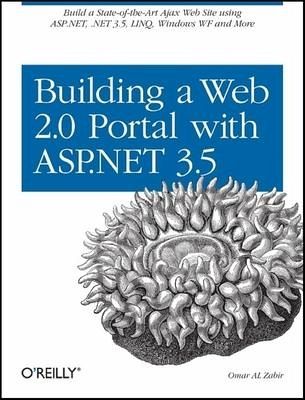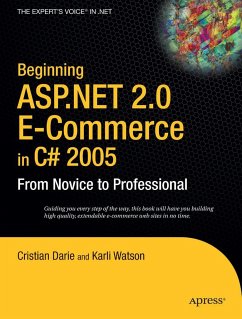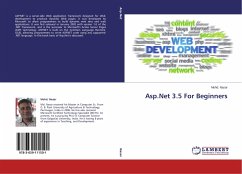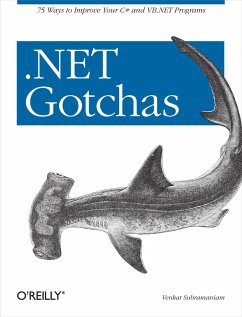Nicht lieferbar

Building a Web 2.0 Portal with ASP.NET 3.5
Learn How to Build a State-Of-The-Art Ajax Start Page Using Asp.Net, .Net 3.5, Linq, Windows Wf, and More
If you think you're well versed in ASP.NET, think again. This exceptional guide gives you a master class in site building with ASP.NET 3.5 and other cutting-edge Microsoft technologies. You learn how to develop rock-solid web portal applications that can withstand millions of hits every day while surviving scalability and security pressures - not just for mass-consumer homepages, but also for dashboards that deliver powerful content aggregation for enterprises. Written by Omar AL Zabir, co-founder and CTO of Pageflakes, Building a Web 2.0 Portal with ASP.NET 3.5 demonstrates how to develop por...
If you think you're well versed in ASP.NET, think again. This exceptional guide gives you a master class in site building with ASP.NET 3.5 and other cutting-edge Microsoft technologies. You learn how to develop rock-solid web portal applications that can withstand millions of hits every day while surviving scalability and security pressures - not just for mass-consumer homepages, but also for dashboards that deliver powerful content aggregation for enterprises. Written by Omar AL Zabir, co-founder and CTO of Pageflakes, Building a Web 2.0 Portal with ASP.NET 3.5 demonstrates how to develop portals similar to My Yahoo!, iGoogle, and Pageflakes using ASP.NET 3.5, ASP.NET AJAX, Windows Workflow Foundation, LINQ and .NET 3.5. Through the course of the book, AL Zabir builds an open source Ajax-enabled portal prototype (available online at www.dropthings.com), and walks you though the design and architectural challenges, advanced Ajax concepts, performance optimization techniques, and server-side scalability problems involved.You learn how to: Implement a highly decoupled architecture following the popular n-tier, widget-based application model Provide drag-and-drop functionality, and use ASP.NET 3.5 to build the server-side part of the web layer Use LINQ to build the data access layer, and Windows Workflow Foundation to build the business layer as a collection of workflows Build client-side widgets using JavaScript for faster performance and better caching Get maximum performance out of the ASP.NET AJAX Framework for faster, more dynamic, and scalable sites Build a custom web service call handler to overcome shortcomings in ASP.NET AJAX 1.0 for asynchronous, transactional, cache-friendly web services Overcome JavaScript performance problems, and help the user interface load faster and be more responsive Solve scalability and security problems as your site grows from hundreds to millions of users Deploy and run a high-volume production site while solving software, hardware, hosting, and Internet infrastructure problems. Building a Web 2.0 Portal with ASP.NET 3.5 also presents real-world ASP.NET challenges that the author has solved in building educational and enterprise portals, plus thirteen production disasters common to web applications serving millions of users. If you're ready to build state-of-the art, high-volume web applications, this book has exactly what you need.










